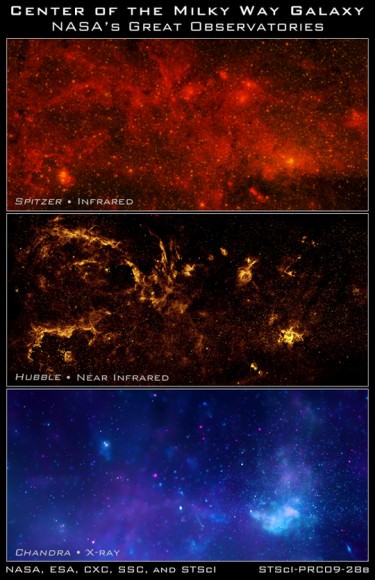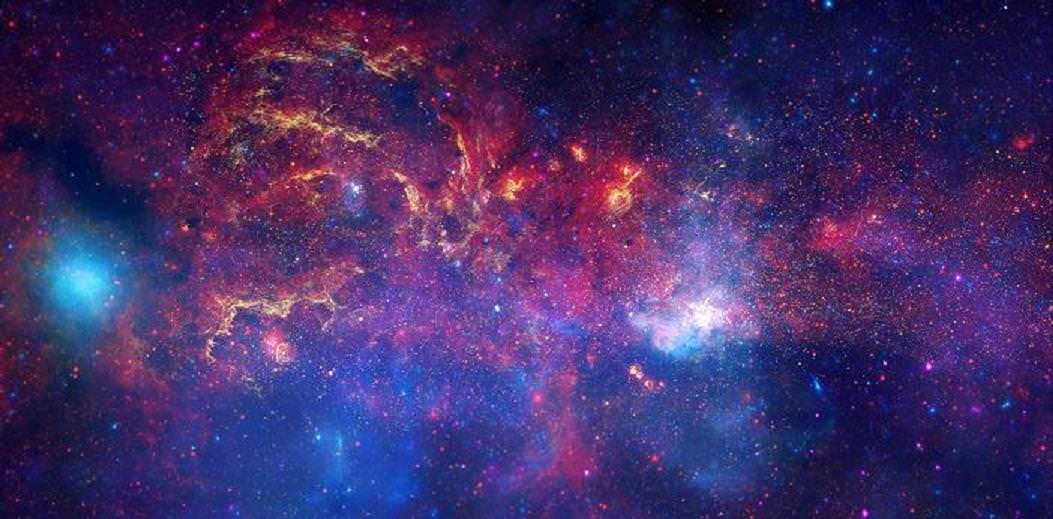[/caption]
When it comes to my job, I see a lot of astrophotography. I’ve contemplated innumerable nebulae, viewed myriad galaxies and dreamed over abounding star clusters. Each photo is a work of art in its own right – where the palette is a computer program and the canvas is a screen. These creations are stunning, showing us the true nature of what lay just beyond the visible perception of human sight. However, there are very few that when printed seem to have life of their own. This snapshot in time is one of them…
When this image was originally revealed on November 10, 2009, it was meant to commemorate Galileo’s 400th anniversary of turning a telescope towards the heavens. At the time, 150 prints were released to libraries, schools, planetariums, nature centers and observatories across the country. These massive six feet by three feet prints are a composite of a near-infrared view from the Hubble Space Telescope, an infrared view from the Spitzer Space Telescope and an X-ray view from the Chandra X-ray Observatory into one multi-wavelength picture.
What no one could prepare you for is the emotional impact such an image could have on you… If only you let it.
In this revelation of the heart of the Milky Way you’ll witness star birth – and death. You’ll travel along the effects of a supermassive black hole nearly four million times more massive than our Sun. You’ll walk into a complex web weaved from glowing gas clouds, dripping with globules, filaments and dark, dusty cocoons where neophyte stars await their turn to emerge. You’ll be swept away on the glowing blue stellar winds of X-ray light and dropped into the well of infra-red. You’ll feel yourself uplifted… Pulled into the “pillars of creation”. You’ll fly along hundreds of thousands of stars that could never be seen in visible light.
In short, you can’t walk away untouched.

To see the full size image here on your screen is one thing, to see it accompanied by the individuals that make up the three by four feet composite is nice… But it’s the difference between looking up an image of the Mona Lisa and looking at the Mona Lisa as it hangs in the art gallery. I strongly urge you to investigate these NASA’s Great Observatories – Galactic Center Image Locations and take the time to visit in person.
You won’t regret the experience.
My many thanks go to Rich Ruggles of Astronomy 1 On 1 for opening my eyes to all the joy, wonder and mystery all over again.

